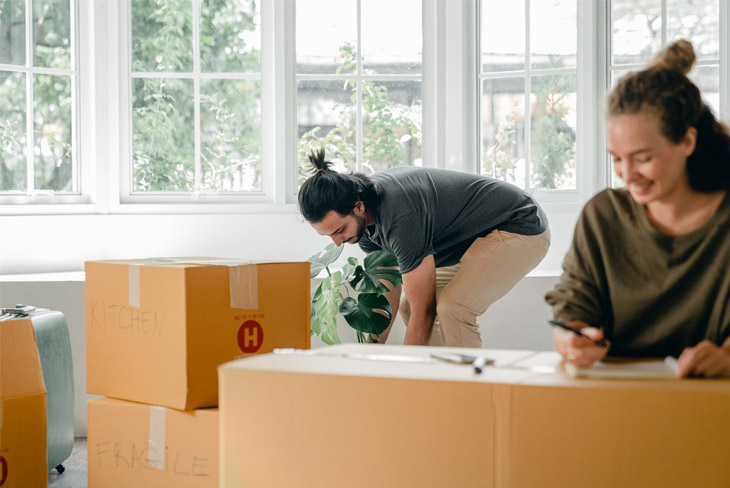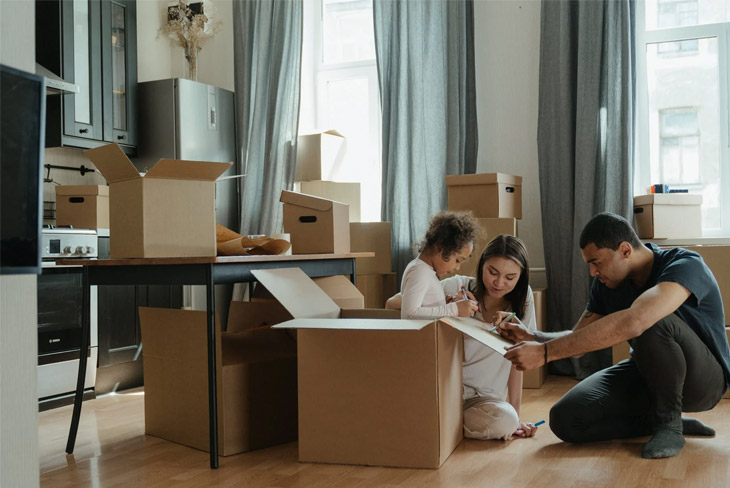A step-by-step directory to a painless move

If you have recently signed a new rental lease, congratulations! That’s the first part done. Now is the time to start outlining your plans for moving so that you can ensure everything is done as smoothly as possible and you aren’t wasting your time. Read on for Panda7’s step-by-step guide to a painless move.
Step one: Arrange your move-out date
Chances are, you have already let your current landlord know that you will not be renewing your lease. Get in touch with them to let them know your moving-out date and arrange how you should return your keys, as well as any other formalities they want you to tackle before you leave.
If you are moving out of home, it might be a good idea to be clear with your parents how the move is going to go down and what help you may need.
Step two: Plan the key steps
It’s time to phone up or email your new landlord and figure out some of the key steps to your transition. Be sure to include when the keys are going to be passed over, where you should park, if they require a moving check-list, first month’s rent (e-transfer, cheque, or other payment method), and elevators. Having all these elements in mind will make it easier when the process begins.
Step three: Change your address
Once everything is all planned out, it’s time to finally update your address. You can contact the Canada Revenue Agency to update your CRA information whenever necessary and choose whether this address is temporary, permanent, individual, or family. It is important to change your address at least two weeks prior to your move-in date, as it can be critical for bank accounts, online accounts, cable, utilities, and more. You may be left on the hook if you don’t change these fast enough.
You may also want to look into updating your personal information with the new address, like your medical offices, subscriptions, credit card, bank, and inform all your friends and families of the new address change.
Step four: Pack your belongings
This step goes hand-in-hand with a moving check-list. Start packing as early as you can with belongings that you don’t need on a daily basis. Consider all your art, posters, decorations, books, movies, games, and clothes you may not need up until your moving date so you won’t be dealing with too much closer to your actual designated move time.
Ensure you have a list of all the last-minute belongings you will need to pack so that nothing is left out and organize them so that they can be easily transferred over to suitcases/vehicles. If you are packing your belongings in boxings, consider labelling your boxes so that you know what is included in each.
Step Five: Hire movers

Now this step is not mandatory, but it can help. While it depends on your budget, hiring movers can be a great way to expedite the process of moving and it can take a ton of stress off your shoulders. You’ll need to take into account your budget, how much the movers’ rates will be, how much you have to move, and how much time it will take. If you can carry everything yourself, it might not be worth it to hire movers. You can also enlist the help of family and friends!
Step six: Consider downsizing
If you are moving out from your parents’ home to a new apartment or from a larger apartment to a smaller one, you may want to consider downsizing. Look into which of your belongings may not fit into your new apartment or rent a storage unit which can make securing your belongings easier.
Step seven: Get to know the neighbourhood
Moving into a new place is one thing but changing areas can be overwhelming if you were used to a five minute grocery trip and are now faced with a thirty minute one. You may familiarize yourself with the local gyms, shops, restaurants, and get to know the transportation a bit better to save yourself some hassle later down the line when you desperately need something.
Step eight: Renter’s insurance is a smart option
Renter’s insurance or tenant’s insurance may be required depending on your lease and can protect your belongings if there is ever a fire, burglar, flood, etc., and can protect your liability if a guest is injured while visiting your apartment. Renter’s insurance is pretty cheap for the protection it offers, starting at as little as $20/month. That’s less than the total monthly cost of your daily coffee run.
If you have renter’s insurance for your existing apartment, it’s time to call your broker or insurance provider and update them on the new address and see if there is a shift in premiums.
Step nine: Buy new furniture
You may have moved some of your old furniture over from your previous apartment, or maybe you’re in the market for a fresh look. Whatever the case, checking out the local furniture stores or larger leading shops is a good idea before you have fully settled into your new apartment. Then you can have a better idea of what to bring and what not to. If you are moving out of your parents’ home and into a new apartment, this step becomes even more important.
Congratulations!
Congratulations on the new move! While it can be an overwhelming endeavour to take on a change of scenery, it doesn’t have to be a hassle. Moving is – without a doubt – one of the most complicated things you can do in life, and it can lead to a lot of confusion. No one is an expert.
Hopefully this short guide will help you out on expediting the process of your move. We hope you enjoy your new place and that the move goes as smoothly as possible!

